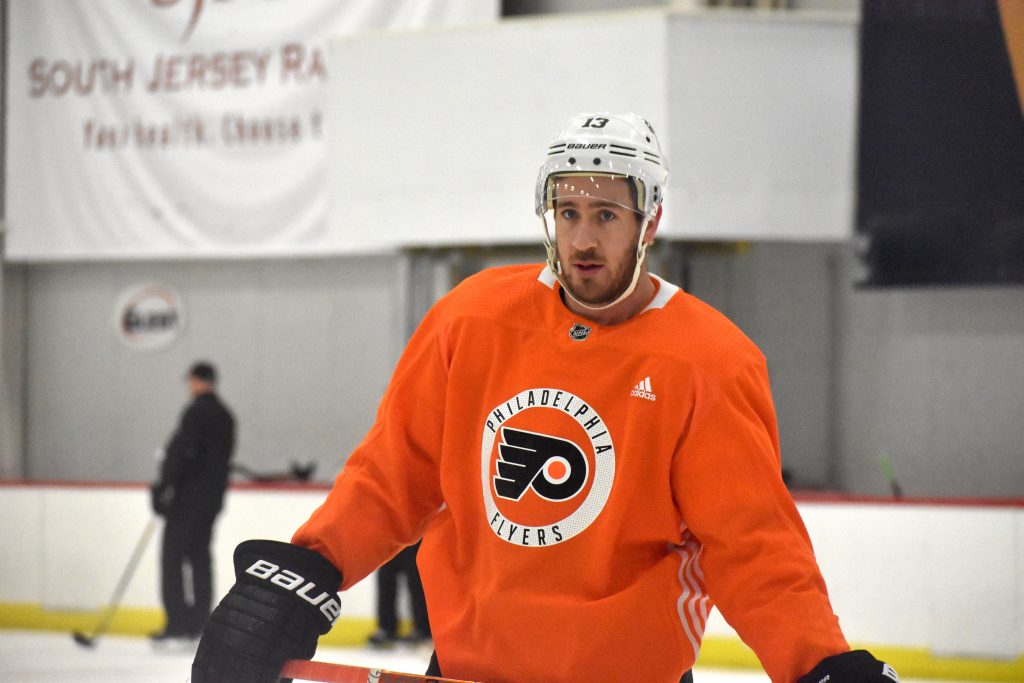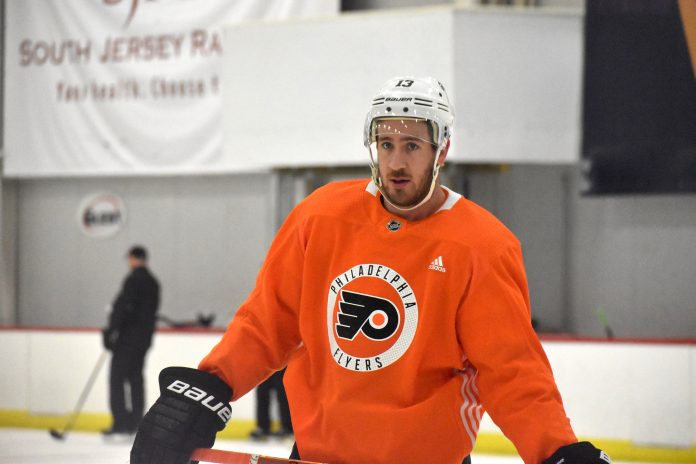Some general managers call it “silly season.” And yet they fully indulge anyway.
The opening of free agency historically sees mass amounts of money thrown at aging hockey veterans, who negotiate their big pay day by hitting the open market, and making their options multiply.
It’s certainly their right to do so. And the general managers of the National Hockey League eat it up, time after time, with the temptation of reeling in the biggest free agent fish in the lake.
It’s also a time of year when crippling mistakes are made by overpaying and overextending player contracts to fill various holes in rosters 11 months before the next Stanley Cup is awarded.
Through the first three days of free agency this year, the Philadelphia Flyers had yet to make a splash. And that could be a very good thing if you look at recent history.
In recent times, the Flyers haven’t exactly knocked it out of the park once the bell rings to open the market, which usually occurs on July 1. This year it was Oct. 9, because of reasons you’ve certainly heard by now. We call it 2020.
But even in rosier years over the last decade, the Flyers have mostly failed in the long run with unrestricted free agents, despite taking some pretty big swings.
In fact, you have to go back to 2007 to find a year when the Flyers signed players from other teams and hit a home run with it.

For argument’s sake, this doesn’t count re-signing players who were under team control. For clarity, we’re talking about long-term contracts (four years or more) that brought in a new player during the offseason. It does, in fact, count players like Kevin Hayes, whose signing rights were obtained via trade but were about to expire that summer. This was the case for several players on our list.
For now, we’re giving Hayes’ big signing a pass, as it’s much too early to gauge the return in just one of the seven years he’s signed for. So far, so good, as Hayes’ presence has been welcomed but it would be ignorant to say his $7.14 million annual cap hit couldn’t be spent in other places, especially this offseason.
So let’s dig in.
First, the good memories of 2007. It was a year that aggressive general manager Paul Holmgren stacked his team with talent and leadership by signing UFAs Danny Briere, Kimmo Timonen and Scott Hartnell. Holmgren traded a first-round pick to Nashville well ahead of the opening of free agency for negotiating rights for the pair of players and made good on the deal by landing both into the lineup.
Timonen (six years, $38 million) and Hartnell (six years, $25.2 million) both lived up to their contracts and eventually signed extensions in 2013. Holmgren made Briere the highest-paid player in the league at the time by signing the ex-Sabre to an eight-year deal worth $52 million. Briere was a clutch performer in Philly and most of his time here was seen as a positive. However, the Flyers did buy out the final two years of his front-loaded contract in 2013.
Now, the others.
Ilya Bryzgalov: Perhaps the biggest overreaction in recent history. The Flyers traded for the Russian goaltender’s rights, as he was coming off a couple of strong seasons in Arizona and was about to be a UFA in 2011. Holmgren signed Bryzgalov to a nine-year, $51 million contract that summer and things went south quickly, as the Flyers traded away eventual two-time Vezina Trophy winner Sergei Bobrovsky just one year into the Bryz era. Bryzgalov was then bought out after only two years in Philly. Although it was an amnesty buyout and didn’t count against the salary cap, Bryzgalov still collects a $1,642,857 paycheck from the Flyers each year through the 2026-27 season, according to Cap Friendly. It’s nice work if you can get it.
Maxime Talbot: It was a decent, sensible signing for Talbot in 2011, as the Flyers inked the fourth-line center to a four-year, $9 million deal. Talbot was fine while here, especially on the penalty kill, but the Flyers traded him to Colorado for Steve Downie just a month into his third year here.
Mark Streit: As the Flyers do, the team traded for Streit’s rights a few weeks before he hit free agency in 2013 and signed him to a four-year, $21 million contract. Streit was 35 at the time of the signing, which made it risky in several ways. However, the Swiss-born defenseman was productive, mainly as a power play specialist through almost the entirety of the contract. Streit was dealt at the trade deadline in 2017, ending up on the Penguins after a three-way trade with Tampa Bay. He won the Stanley Cup a few months later.
Vincent Lecavalier: The first overall pick of the 1998 NHL Entry Draft and longtime Lightning captain was bought out by his original team, leaving him open to all suitors in 2013. Less than a week later, the Flyers jumped on Lecavalier and signed him to a four-year, $22.5 million contract, hoping he would be a solid second-line center behind Claude Giroux. It didn’t pan out that way, as Lecavalier produced just 58 points in 133 games over two-plus seasons. He was traded to Los Angeles in 2016 with a built-in agreement that he would retire at the end of the Kings’ season.
Dale Weise: This one never really got on the right track, as the Flyers expected production similar to the 14-goal season Weise produced in Montreal the year before Ron Hextall signed him to a four-year, $9.4 million deal in 2016. Weise scored just 17 goals in 152 games over three seasons in Philly. After several stints in the AHL, Weise was traded back to the Canadiens.
James van Riemsdyk: Maybe the Flyers were hoping to make up for the mistake of trading away JVR in the first place. After van Riemsdyk established himself as a 30-goal scorer in Toronto, Hextall lured him back to Philly and inked him to a five-year, $35 million contract with the hopes that they had found their sniper. JVR produced 27 goals and 19 assists in 66 games in his first year back, but struggled this past season with only 19 goals in the same number of games. His $7 million cap hit has helped put the Flyers in their current salary cap struggle.
In summary, most signings in silly season look good at the time and give fans optimism heading into the next season. The Flyers were already a good team in 2019-20 and were missing significant pieces in Nolan Patrick and Oscar Lindblom. The Matt Niskanen departure creates a hole, but the Flyers can still fill it before the trade deadline. They’d be wise to keep some cap flexibility until then. ••





